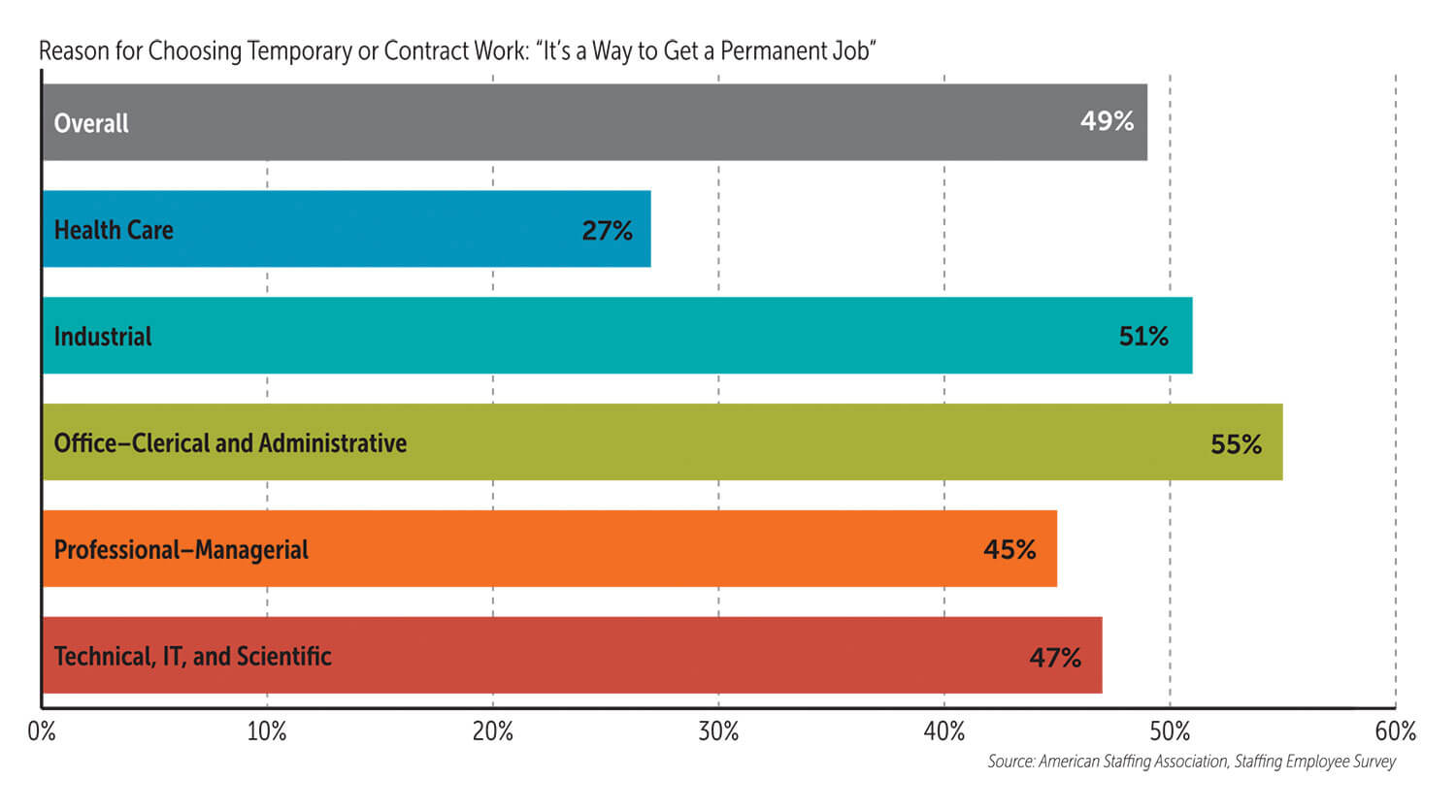The American Staffing Association recently released its 2017 Staffing Industry Playbook to help employers plan for the New Year. The report shows continued growth for the staffing industry, which is great news for all since strong staffing employment has been found to be a reliable indicator of a healthy economy.
Here’s a closer look and the numbers and what they can mean for your staffing and recruiting efforts this year:
1. There are still more jobs than there are great candidates. The gap between the number of job openings versus hires is the highest its been since the two were first measured against each other in 2000. In other words, there are more unfilled jobs (reaching about 6.2 million each month) than there are hires (about 5.5 million each month). Competition for top talent—even among those in temporary and contract positions—isn’t slowing down.
2. Fewer people are looking to work at all. Adding to a dwindling supply of talent, participation in the job market is the lowest it’s been since 1977. ASA attributes this to a combination of an aging workforce (more workers retiring) and other people simply not interested in pursuing jobs for various reasons.
3. It takes staffing levels about six years to recover from a recession. U.S. staffing employment has remained steady since 2015 when it finally climbed back up to pre-recession levels. One million jobs were lost in during the 2008-09 recession, but they’re back now. In fact, 3 million temporary and contract employees are currently working through staffing firms.
4. Staffing firms are perfecting their matchmaking skills. In 2016, U.S. staffing firms hired 7% fewer temporary and contract employees than the year before, but the number of total workers out in the field remained steady. How? Better retention. As ASA points out, the staffing industry is doing a better job of keeping workers on assignment longer, which means the quality of candidates through staffing firms is high and staffing firms’ abilities to match those candidates with well-suited jobs is increasingly reliable.
5. Employers are relying on temporary staffing more than ever. The amount of temporary and contract staffing positions versus nonfarm positions is at a record high. In fact, the staffing industry has grown nearly two times faster than the economy itself since the recession. The recession may have caused a structural shift in that direction and, with the talent at such a high demand now, temporary staffing has become a strategically sound way to fill employment gaps.
6. Temporary and contract staffing positions are prevalent in a wide range of occupations. Most temporary positions are in the industrial and clerical fields. However, highly skilled occupations in health care, professional and technical fields also make up a significant amount of temporary positions. In fact, wages for temporary and contract workers average about $17 per hour with some positions making more than $100 per hour.
7. Most temporary and contract workers are looking for permanent jobs. Nearly all staffing employees would like to be permanently employed, and nearly half count it as the main reason they work through a staffing firm (look at the chart below for variations by industry sector). This is great news for those who use staffing assignments as a bridge to offering permanent employment (often called temp-to-hire). But are enough employers taking advantage of the opportunity? One-third of staffing employees receive permanent job offers from staffing firm clients while two-thirds of workers who receive an offer accept it.

8. With healthcare workers, though, it’s more about the flexibility. Temporary and contract workers in the healthcare industry are the only ones to choose flexibility over finding a permanent job as their main reason to work through a staffing firm. In fact, 41% of healthcare workers choose this route mainly for better work hours and scheduling.
The future looks bright for staffing firms and their employer clients. Together, we’ve hit a sweet spot of recruiting high-quality candidates who are willing to stick around—what a great combination. If you have any questions or concerns about your staffing strategies, let us know.
Need to Find Qualified Employees?
If your company is in search of skilled employees, contact The HT Group here:
Like what you read?
Subscribe to our newsletter for more!
Copyright: andreypopov / 123RF Stock Photo




